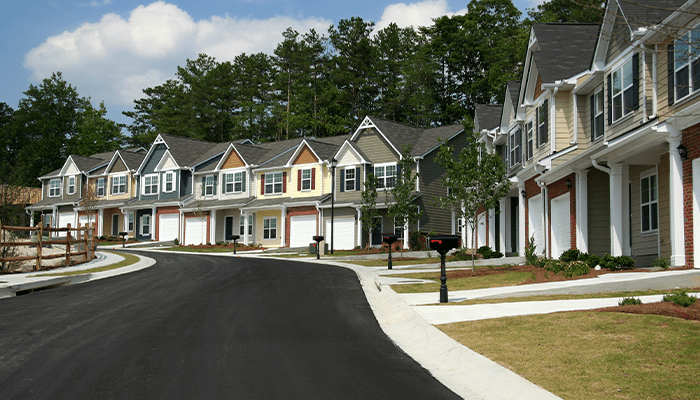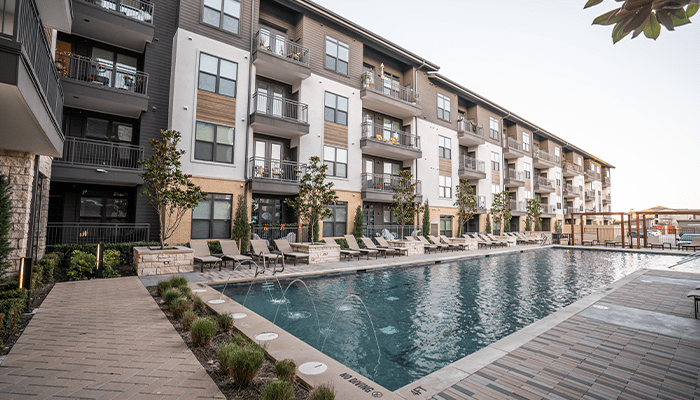
6 Essential Loss Control Strategies for Multifamily Housing
In commercial real estate, multifamily housing has unique risks that property owners and managers must navigate. Whether you're managing apartment complexes, condominiums, or other multifamily properties, understanding loss control is vital to protecting both your tenants and your bottom line. This article explores critical loss control strategies to mitigate these risks.
At its core, loss control is a series of risk management practices designed to minimize the likelihood of insurance claims. For multifamily housing, this involves identifying potential sources of risk, from common slip-and-fall accidents to more severe incidents like fires and assaults. The goal is simple: prevent accidents and losses before they happen.
Need guidance on developing a loss control plan for your multifamily property? Our risk management team is ready to help.
6 Key Areas of Focus for Multifamily Housing
- Slip, Trip, and Fall Hazards
One of the most frequent and costly claims in multifamily housing revolves around slip, trip, and fall incidents. Wet floors, uneven sidewalks, and poorly lit areas are common culprits. Regular inspections and prompt maintenance of these areas can significantly reduce the risk. Such claims can lead to severe injuries and significant payouts. In one case, a tenant was awarded $4 million after a slip and fall accident in a common area due to ice, highlighting the importance of timely snow and ice removal. - Security Measures
Multifamily properties must prioritize security, especially in areas prone to higher crime rates. This includes adequate lighting, surveillance cameras, and regular security patrols. A jury awarded $14 million to a woman who was assaulted in an apartment complex that failed to provide adequate security measures. - Fire Prevention
Fires are a significant concern in multifamily housing, often stemming from electrical issues, cooking accidents, or lack of proper maintenance. Ensuring that smoke detectors, fire alarms, and sprinkler systems are in place and regularly inspected is crucial. In one tragic event, a faulty electrical panel led to a fire that destroyed 224 apartment units. Another incident involved a $5.5 million settlement for severe burns sustained by a tenant due to non-functional smoke detectors. - Water Intrusion
Water damage from leaks, frozen pipes, and malfunctioning appliances can lead to substantial repair costs and tenant displacement. Regular maintenance checks and swift action to address issues are essential in preventing water-related losses. In one costly example, a washing machine water line burst in a fourth-floor unit, leading to a $14 million loss due to extensive water damage across multiple units. - Playground and Pool Safety
Pools and playgrounds are attractive amenities in multifamily housing but come with inherent risks. Ensuring that these areas are well-maintained, supervised, and compliant with safety regulations can prevent tragic accidents. The Consumer Product Safety Commission estimates that over 200,000 children are treated annually for playground-related injuries. Proper surface materials and regular inspections are key to reducing these risks. - Contractor Management
When contractors are on-site for maintenance or major projects, property owners must ensure that these activities are safely managed. This includes verifying that contractors have adequate insurance and that work areas are secure. Implementing a safety plan and notifying tenants of ongoing projects can prevent accidents and ensure a smooth operation.
Preparing for the Unexpected: The Role of a Strong Loss Control Program
As we experience increasingly unpredictable weather patterns, a robust loss control program is more important than ever. Multifamily housing owners and managers should work closely with risk control experts to identify vulnerabilities and implement effective mitigation strategies.
For more information on loss control measures or a customized risk assessment for your properties, reach out to discuss how our Real Estate team can support your loss prevention efforts.
Featured News & Insights

If you're serving on the board of your homeowners' association, you're wearing a lot of hats, and "insurance expert" probably isn't one of them. That's okay. Most HOA board members are volunteers,...

When you think about outdoor amenities in rental properties or multi-family housing, such as swimming pools, patios, and playgrounds, they often conjure images of happy tenants, summer barbecues, and...

Flood insurance doesn’t come up often – until it does. Usually it’s during a property acquisition, a refinance, or a lender review. Suddenly, there’s a requirement for high-cost coverage and a tight...